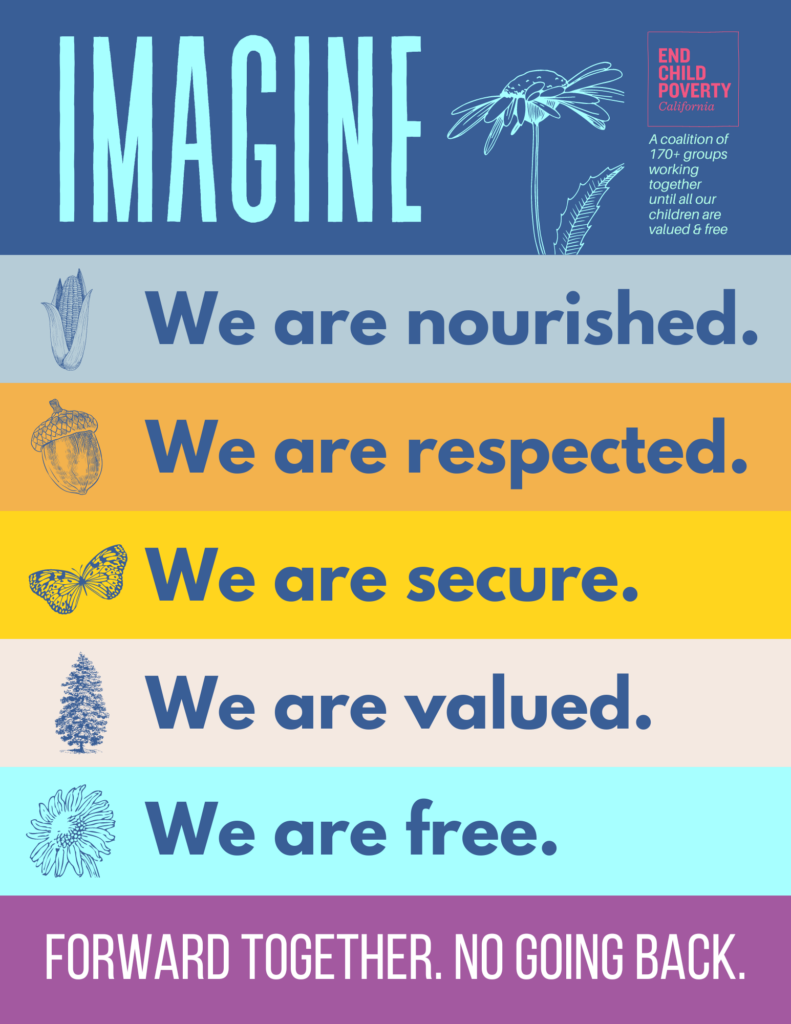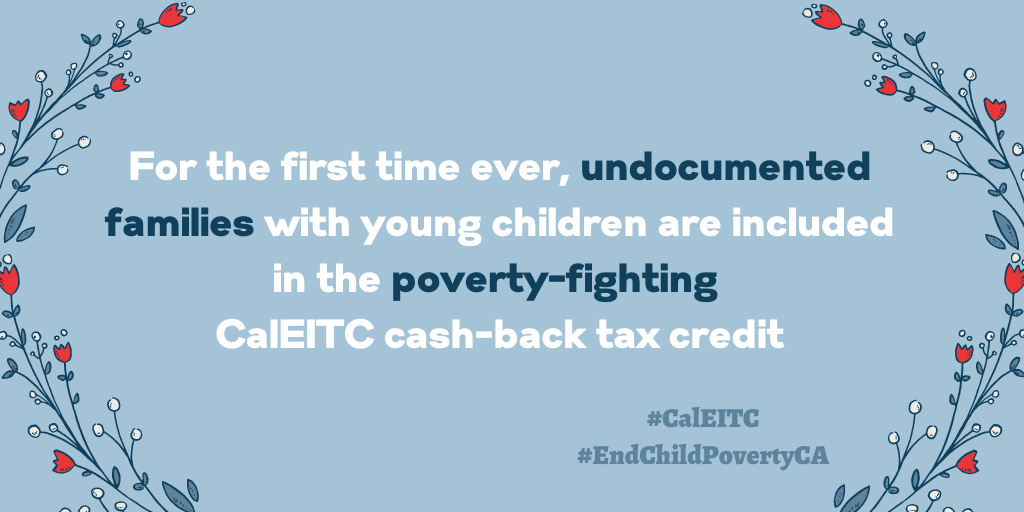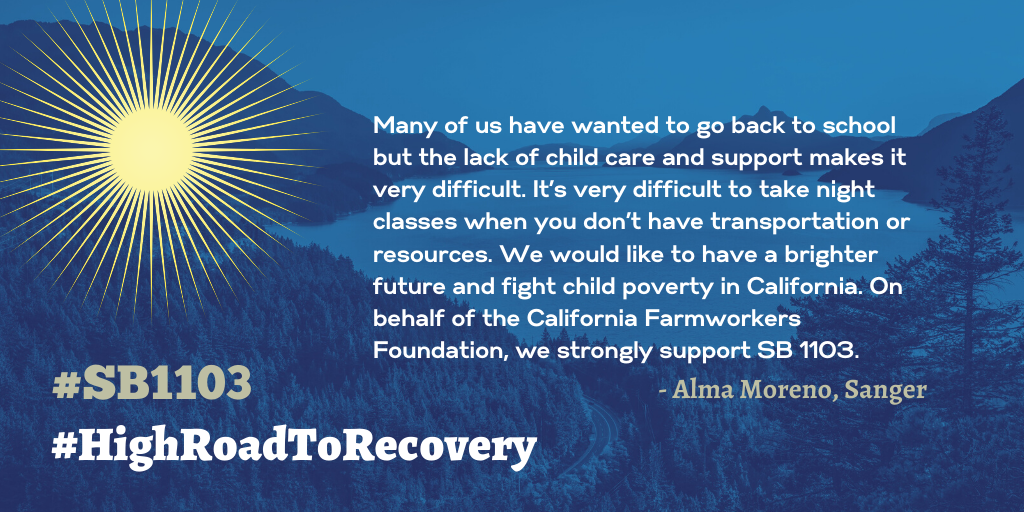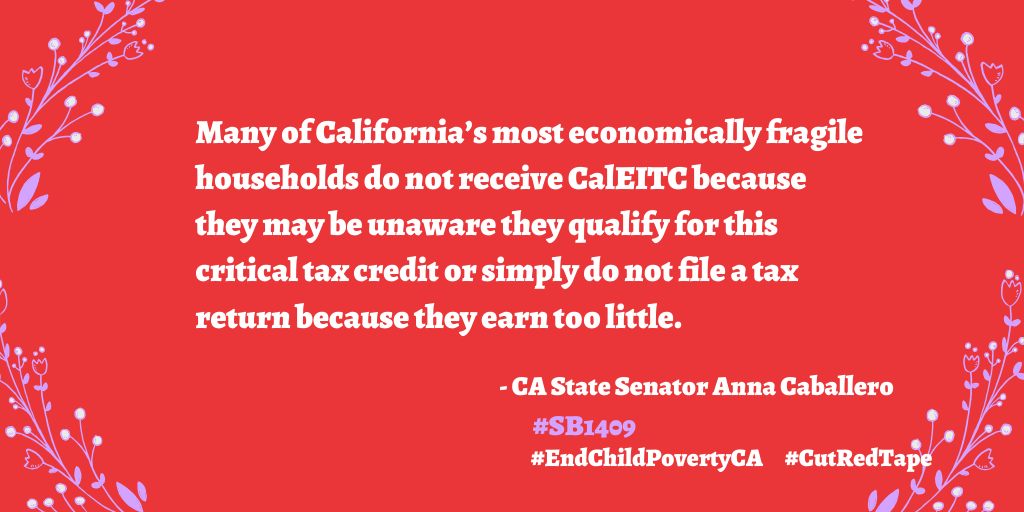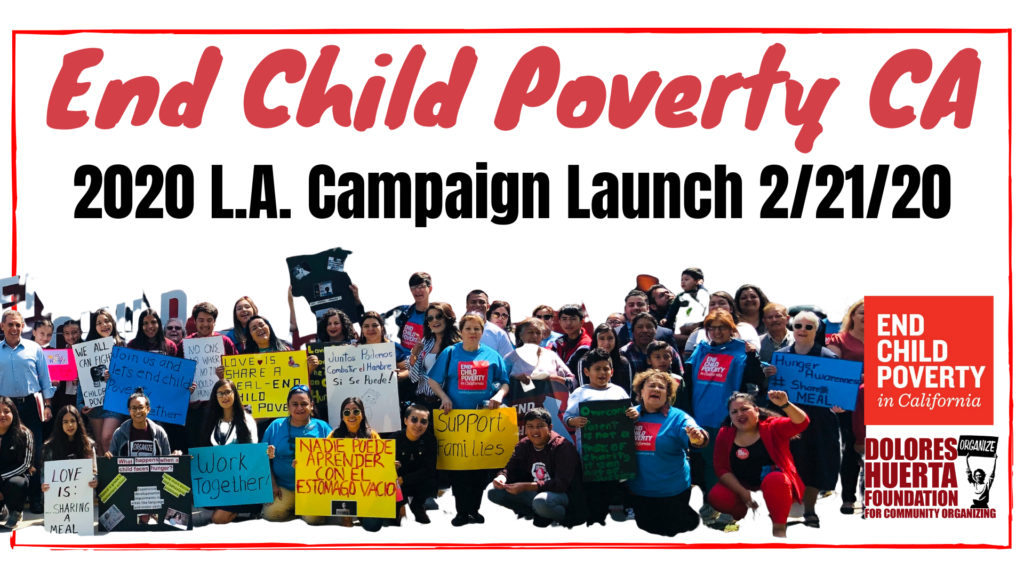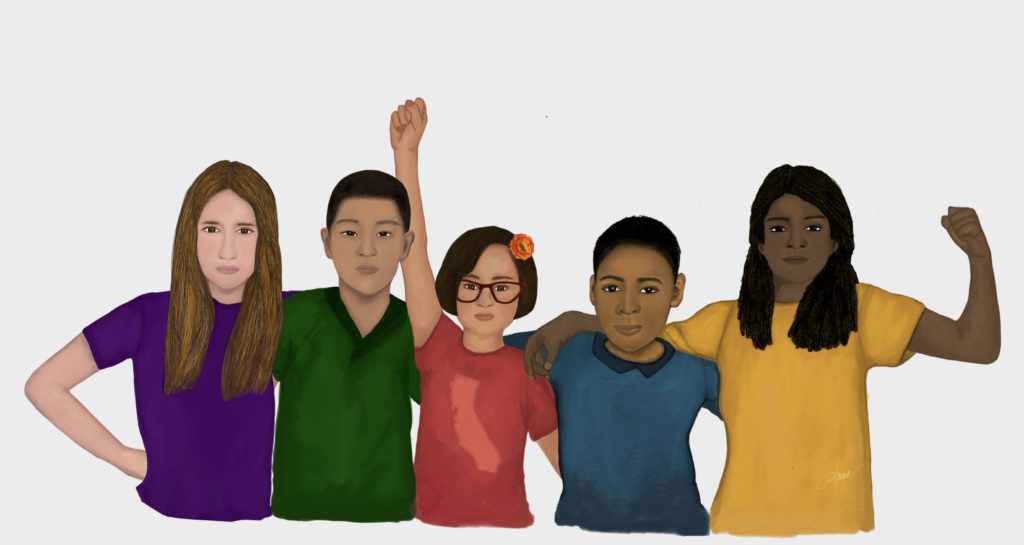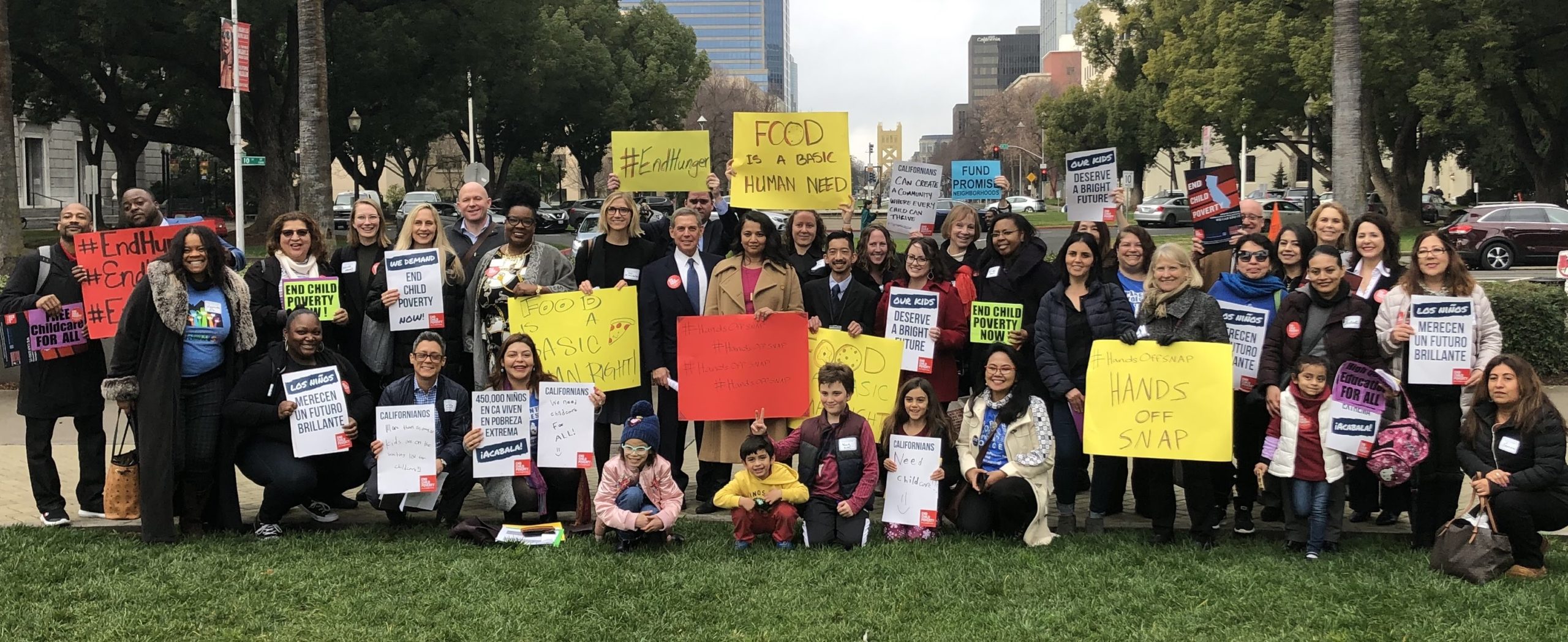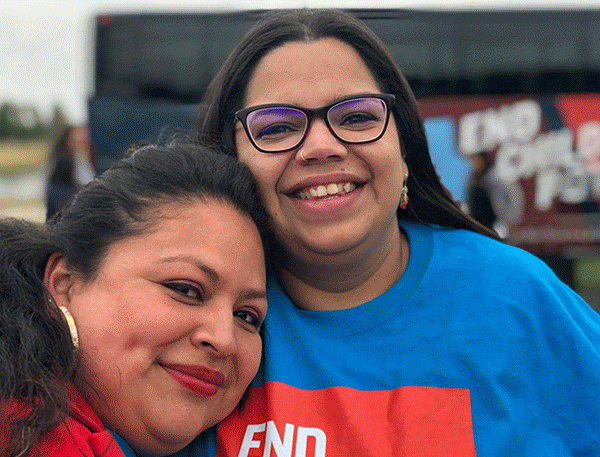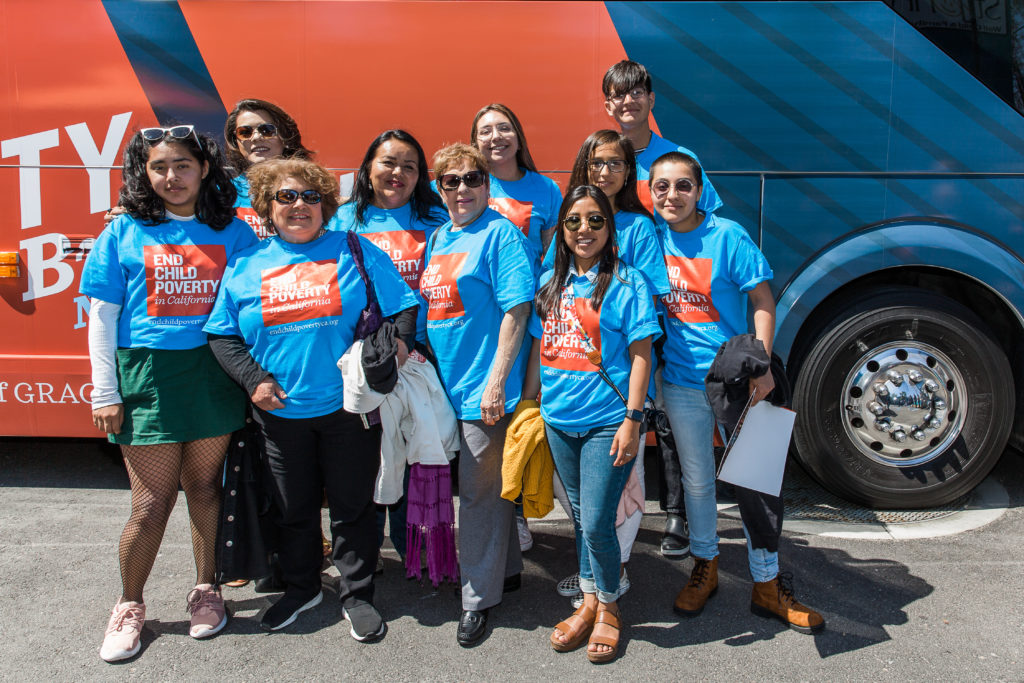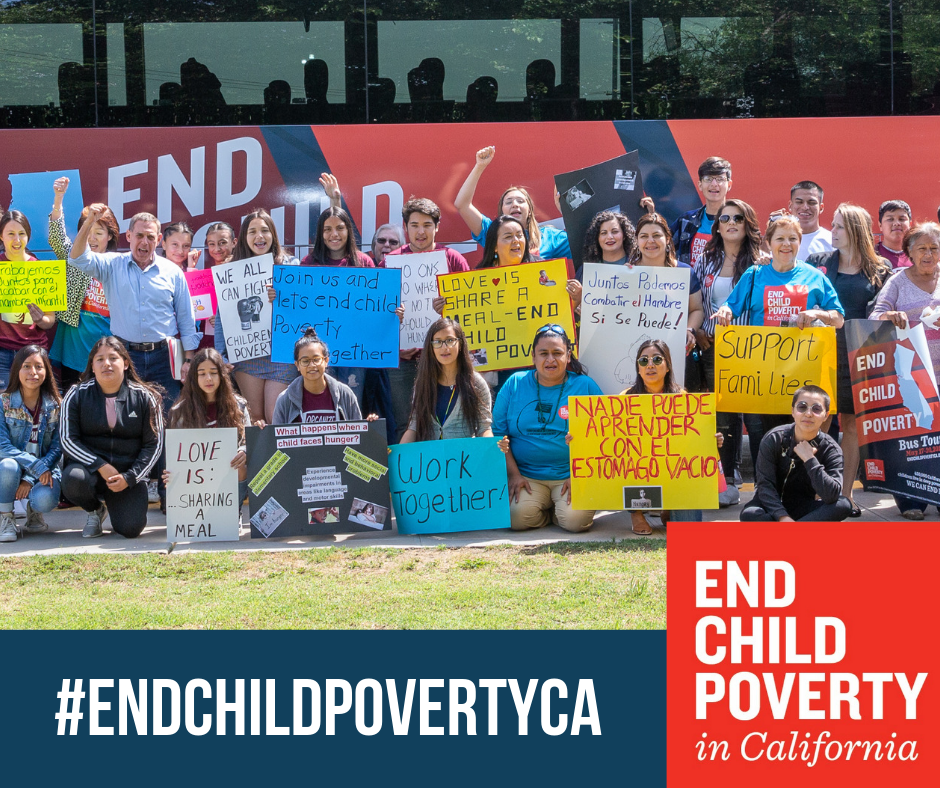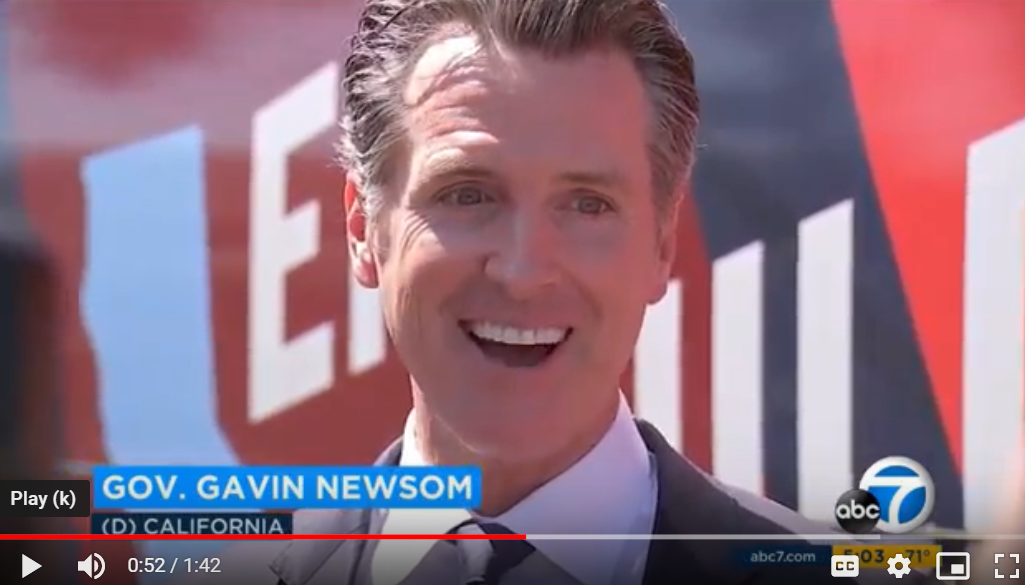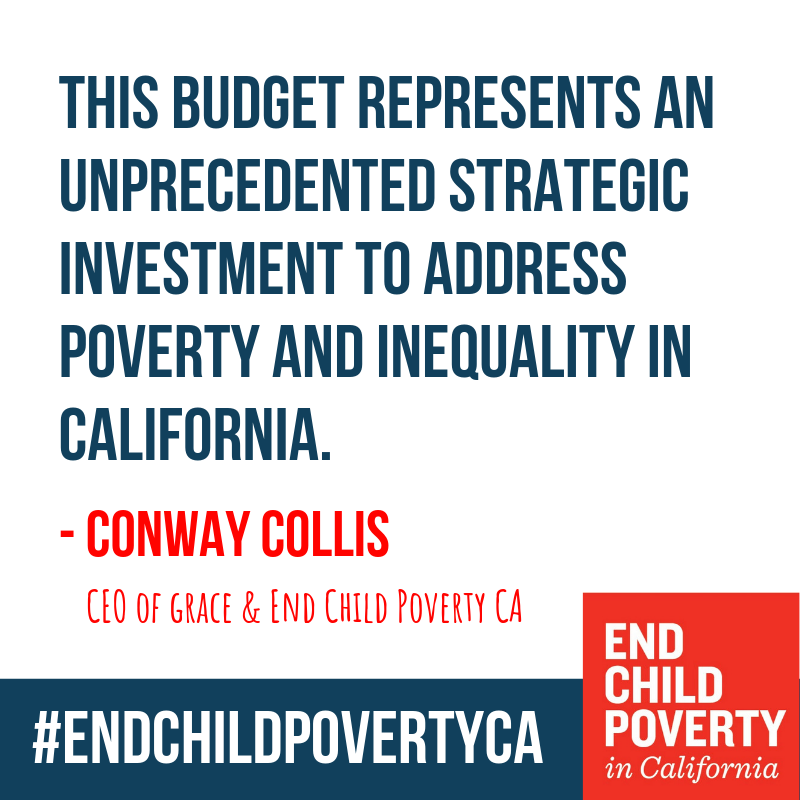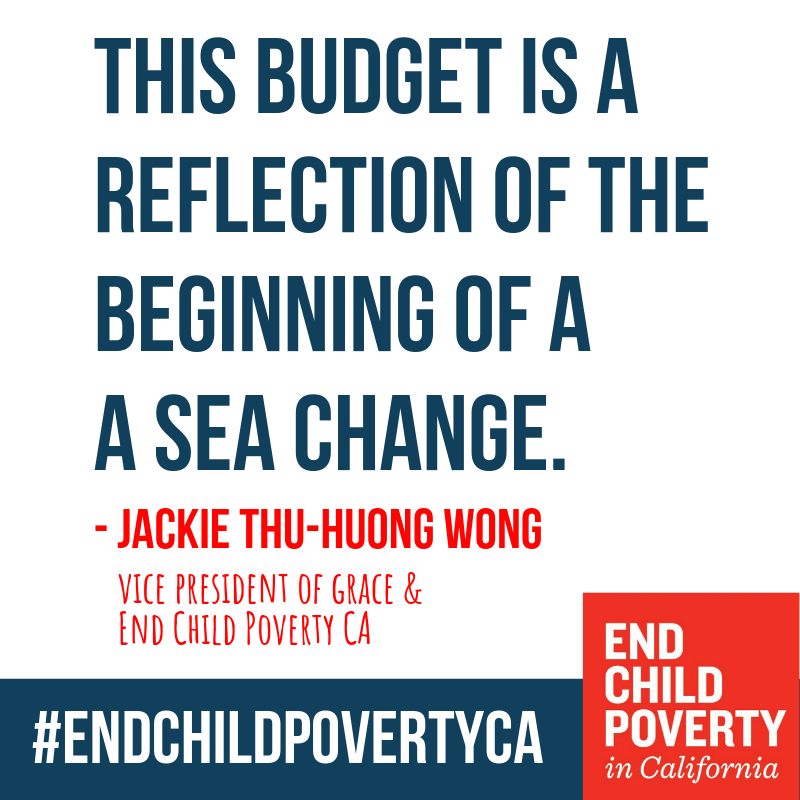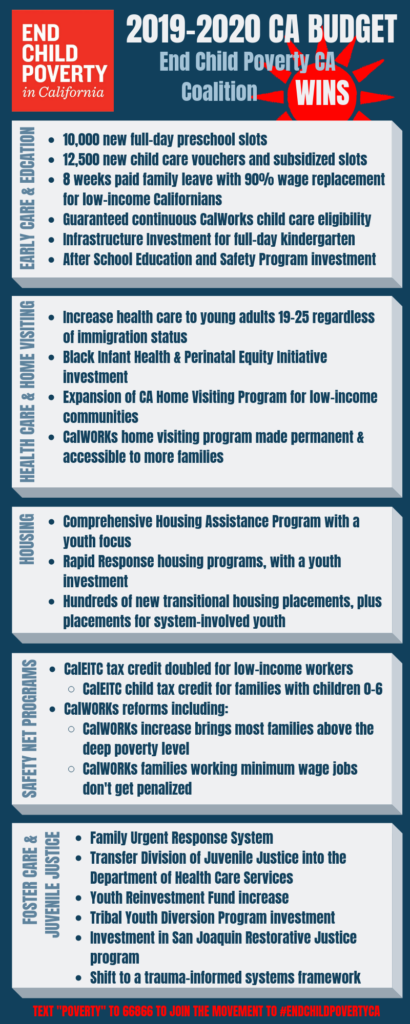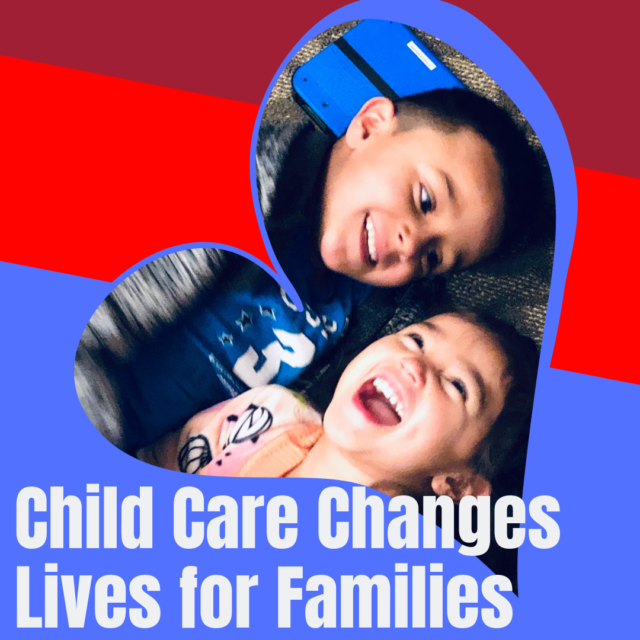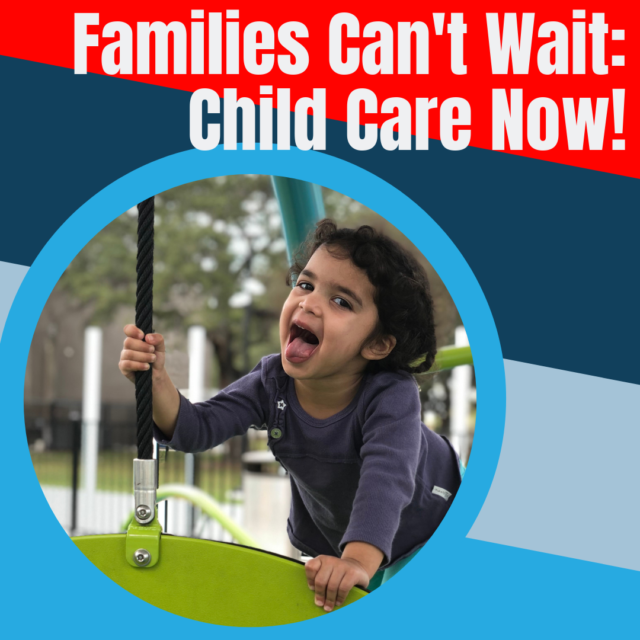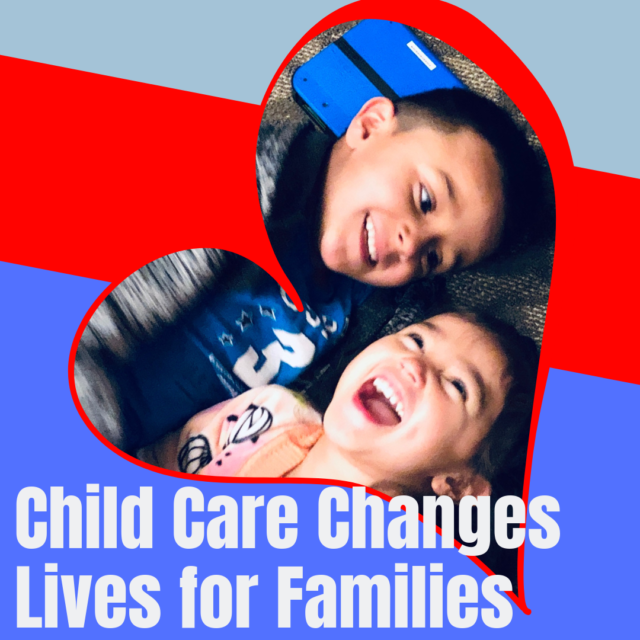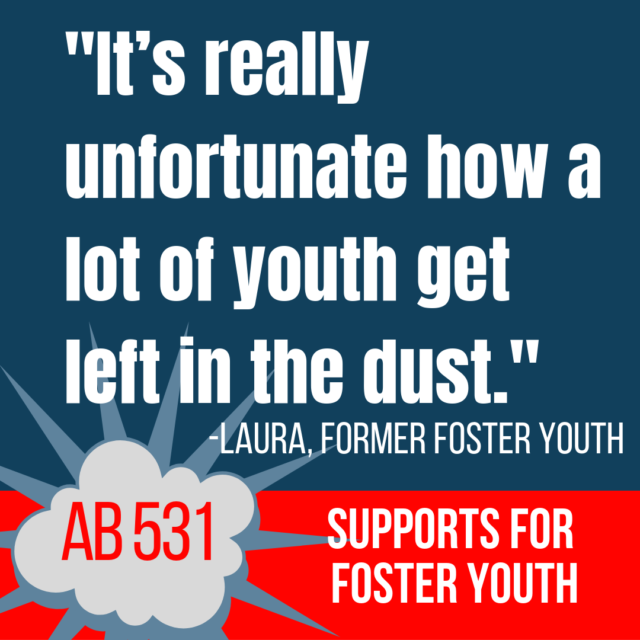Summary of California’s Budget Investments to Fight Child & Family Poverty in 2023-24
At GRACE, we imagine a California where children and families receive accessible and equitable investments to ensure a secure and stable present, and advance a future free from poverty. Public policy is a fundamental tool to realize this vision with the power to dismantle poverty driven by systems of oppression and foster a community-led future where all people thrive. The state’s budget is a powerful tool to achieve these outcomes and is a statement of California’s values as the state determines which priorities merit investment.
In the face of a budget problem, we thank Governor Newsom and the Legislature for drawing a hard line against austerity cuts, learning the lessons of the failed Great Recession response by protecting programs and making key investments benefiting low- and no-income Californians. It is more vital than ever to invest in anti-poverty programs during tough economic times and we are grateful that the Administration and Legislature acted in alignment with our vision to end poverty.
IMAGINE Budget Victories
We celebrate the major wins of our coalition’s campaign and thank the Legislators, ECPCA partners, and community leaders who fought tirelessly seeing them to success.
Child Care: Eliminate Family Fees
$56 million for the historic victory to permanently bring family fees to the federal minimums: eliminating family fees for 375,000 families and capping fees at 1% for families at or above 75% of the State Median Income starting October 1st. The agreement also forgives debt from uncollected family fees accrued prior to October 1st, 2023.
Child Care Rate Reform
$1.4 billion in one-time funds to increase child care provider rates and a commitment to move from a market rate to a cost-based model, which included commensurate increases throughout the child care system. This is a major victory to improve child care provider payment rates and practices to increase parent choice for child care arrangements and help stabilize operations for participating providers. Key details on implementation were subject to agreement with Child Care Providers United, which ratified a new two-year contract codifying key wins in early August.
CalWORKs Grant Increase
$500 million ongoing to finally end childhood deep poverty in the CalWORKs program by providing a permanent 10% increase to CalWORKs grants.
CalFresh Minimum Nutrition Benefit
$15 million in one-time funds to establish the CalFresh Minimum Nutrition Pilot Program that will provide 12 months of benefits not less than $50, more than double the federal minimum allotment of $23 per month. This is a key step toward a statewide minimum $50 benefit to fight the record hunger cliff while supporting our vital food economy, as proposed by SB 600 (Menjivar).
Summer EBT for All
$47 million in state and federal funds to begin implementation of Summer EBT to end summer hunger. The human services budget trailer bill ensures California will maximize the new Summer EBT program available to states in summer 2024, expected to bring approximately half a billion dollars in federal food benefits to California children in low-income families.
Food for All
$40 million in one-time funds to begin the outreach and automation necessary for the implementation of new CalFresh eligibility for people who are 55+ years old and are not currently receiving benefits due solely to immigration status. The human services budget trailer bill also rejected a proposed delay to January 2027 and instead established a start date of October 2025.
Prevent Debt Interceptions to FYTC Households
The 2022-23 budget created the Foster Youth Tax Credit (FYTC) to provide former foster youth with cash assistance. In the first year of implementation, some recipients had their credit either partially or wholly intercepted to pay off debt held in their name by the state. Because identity theft is experienced at high levels by foster youth, it is believed that a significant amount of this debt was not even debt they owed. Building upon efforts that started with the 2021-22 budget’s protection of refundable credits from debt interceptions, the 2023-24 budget adds the FYTC to the list of protected credits, ensuring foster youth recipients receive the full credit they are owed. All of these intercept protections will be effective in 2024.
School Meals for All
Nearly $300 million to bolster and continue the successful implementation of California’s nation-leading healthy school meals for all program.
Remaining IMAGINE Priorities
While there were many victories this year, there were also priorities yet unfulfilled. We are confident that anything not accomplished was from a lack of resources, not a lack of shared vision for a more just and prosperous California, and that low-income Californians have a robust safety net that gives them opportunities for their future. We are grateful for the work of our budget champions and the ongoing efforts to ensure the revenues necessary for continued investments. We are excited to move these priorities forward together next year.
Reimagine CalWORKS
The budget did not include the package of investments needed to dismantle the Pete Wilson rules grounded in sexism and racism that still punish the disproportionately Black and Brown women and children served by CalWORKs. Reimagine CalWORKs would create an anti-racist, family-centered program that aligns with the Governor’s north star to end child poverty by reforming sanctions that push 60,000 children into deeper poverty. As proposed by Assemblymember Arambula and Senator Rubio.
Safety Net for All
The budget fails to include an investment ensuring a safety net for all by providing unemployment benefits to excluded immigrant workers, nor does it include investment in a workgroup to study the pathway to this critically needed investment. As proposed by Senator Durazo and Assemblymember Carrillo.
It Takes a Village
The It Takes a Village initiative would have provided $45.5 million in one-time funds to expand the highly successful place-based anti-poverty programs working in front-line communities across the state of California. The programs provide a coordinated continuum of educational, health, and community services and supports at every stage of a child’s life–from before birth through college and career–to ensure children succeed in schools and families move out of poverty. As proposed by Assemblymember Bonta and Senator Hurtado.
CalEITC Minimum $300
The CalEITC Coalition sought to increase the CalEITC minimum credit from the current $1 to $300, making the credit more meaningful to recipients and bolstering the ability of the CalEITC to fight poverty and reverse racial inequities. We thank the Senate for their significant support in the June Budget, and their ongoing through SB 220. As proposed by Assemblymember Gipson and the CA Senate.
Young Child Tax Credit for All
The proposal would have expanded the YCTC to reach all CalEITC-eligible filers who claimed dependents. This would provide a $1.70 return for every $1 invested, as families spend these funds to support their basic needs and the funds move through their local economies. As proposed by Assemblymember Santiago.
Prevent Child Support Debt from Disrupting Families
The budget ensures timely implementation of the full pass-through for former CalWORKs families by April 2024. The Truth and Justice in Child Support Coalition will seek to eliminate uncollectible government-owned child support debt, as well as extend the full pass-through to current CalWORKs families.
12-Month Comprehensive Perinatal Services
The budget did not extend social support benefits of Medi-Cal’s Comprehensive Perinatal Services Program to 12 months postpartum to protect maternal and infant health. As proposed by Assemblymember Schiavo.
We again extend our appreciation to the Legislators who championed this year’s ECPCA Imagine Campaign budget priorities and for the continued work by the Governor and Legislature to prioritize investments in our communities. These priorities are informed by and will make continued progress toward the goals of the Lifting Children and Families out of Poverty Task Force.
Our coalition looks forward to continuing our shared work with partners, community, the Legislature, and the Administration to realize our vision and lift all children and families out of poverty.
